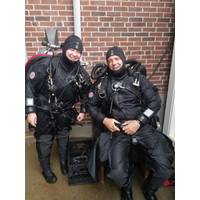
WHOI: Dive Team Awarded by International Organization
the world. The team supports scientific missions by utilizing various diving techniques, providing essential equipment, and ensuring the safety of divers and the integrity of diving operations. The team is an integral part of the WHOI Reef Solutions initiative, supporting the engineering and autonomous technology used to advance solutions-based coral reef research. The dive team also supports various underwater vehicle operations, including REMUS, an autonomous underwater vehicles (AUVs) designed by WHOI’s Oceanographic Systems Lab.According to the Academy, the WHOI team was awarded this honor
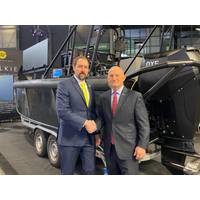
Sea Machines Gets New Chief
Boston-based developer of marine autonomous technology Sea Machines Robotics has appointed David Wasson as its new chief executive officer (CEO).Founder Michael Gordon Johnson will assume the position of president and chief technology officer for the company, while David 'Chip' Wasson takes the CEO role.“Through Michael’s leadership, the Sea Machines team has relentlessly pursued the mission of safe, secure, and sustainable ocean mobility, building a recognized leader in maritime autonomy. His focus on the technology roadmap and product development going forward will ensure further

MATS Spotlights UK's Future Marine Infrastructure for Its 10th Edition
including the blue economy, robotics and remote data, artificial intelligence and next generation autonomous platforms while visitors will have the chance to meet a wide range of companies and organizations in the exhibition area."We are incredibly proud to be hosting our 10th Marine Autonomous Technology Showcase. The focus on the future of the UK’s marine research infrastructure is vital, and we’re excited to bring together such a remarkable lineup of speakers and sessions.“It’s an opportunity to not only reflect on where we are now but also to look ahead and explore
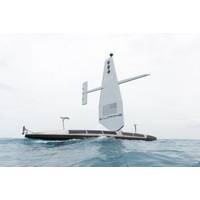
Philantropist Trust Funds Cayman Islands EEZ Mapping
Surveyor unmanned surface vehicle (USV) equipped with the latest multibeam echo sounders and metocean sensors for ocean mapping and ecosystem monitoring, as well as radar, cameras and advanced machine learning.The project will result in 80% of the Cayman Islands’ EEZ will be mapped using autonomous technology. It will take approximately six months and will include coast waters 25m to 12 nautical miles offshore; Fishing Banks, namely 12 Mile Bank, 60 Mile Bank, Pickle Bank and Lawfords Bank; and Cayman Trough and the remainder of the Cayman Islands EEZ outside of the Cayman Trough.Saildrone will
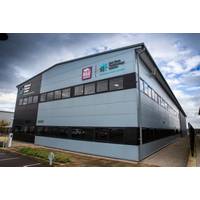
National Subsea Centre, NOC Innovations Partner
The National Subsea Center (NSC), a center of excellence for subsea research and technology development, formed a partnership with NOC Innovations, a Southampton-based facility making marine research and tailor-made autonomous technology available to organizations globally.The two centers will bring together specialist researchers, engineers and scientists to form a community dedicated to addressing marine-related issues that no single entity could tackle alone. Uniquely positioned both geographically and technologically, the NSC and NOC Innovations will draw on shared resources, insights and skills

US Aims to Improve Ocean Observations with $2.7 Million for New Robotic Floats
to increase our knowledge of the Arctic and the Tropical Pacific Ocean, where data collection has been sparse.“OneArgo exemplifies the type of services that NOAA provides to help improve climate science and resilience,” said NOAA Administrator Rick Spinrad, Ph.D. “The pursuit of autonomous technology to fill critical observing gaps and provide essential data and tools for society will only become more important as we move into the future.”The Argo program includes 26 countries. The data from the Argo array plays a major role in ocean and climate assessments, such as assessments
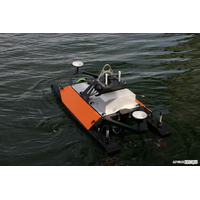
Maritime Robotics and Teledyne Marine Equip Ukrainian Navy with USVs
Maritime Robotics, the Norwegian provider of autonomous technology, and the Danish subsea technology supplier Teledyne Marine, said Friday that they had together delivered a number of Uncrewed Surface Vessels (USVs) to the Ukrainian Navy for advanced sensor data collection.Maritime Robotics' Otter USV, equipped with the Teledyne RESON SeaBAT T51-R multibeam echosounder from Teledyne Marine, is now in use by the Ukrainian Navy.According to the company, the USV enables critical data collection, without endangering human lives, as the sensors are carried by an unmanned vehicle. This allows for

Barge Completes Autonomous Navigation Test in Busy Belgian Waterways
an opportunity to test our technology in a real-life situation, where numerous maneuvers were performed successfully and safely. “The test run provides all partners within AUTOSHIP with essential experience and data, which can help us advance the adoption of remote-controlled and autonomous technology in the maritime sector."“Together with last week’s successful demonstration of a coastal cargo ship in Norway, we have proved that these technologies are applicable across different vessel types and suited to a variety of operations”.Antoon Van Coillie, CEO, ZULU Associates
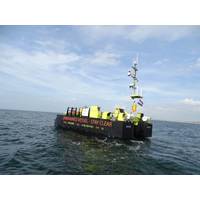
MATS, A New Uncrewed Platform for Offshore Wind
Survey, positioning and data management firm UTEC, part of the Acteon Group, is targeting the offshore wind survey and inspection market with a new uncrewed surface vessel (USV).Torsten Marten, lead surveyor, UTEC, outlined the new design at the Marine Autonomous Technology Showcase (MATS), at the National Oceanography Center (NOC) in Southampton, UK, early November.It’s a 12m-long, “DP equivalent” catamaran design, developed to offer a stable platform for survey and inspection operations, using vessel-based sensors and an up to 3-tonne remotely operated vehicle (ROV) capacity


 February 2025
February 2025





